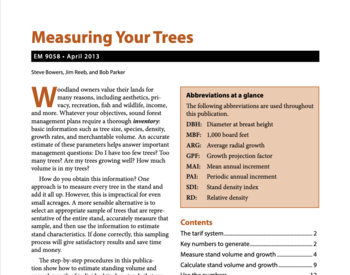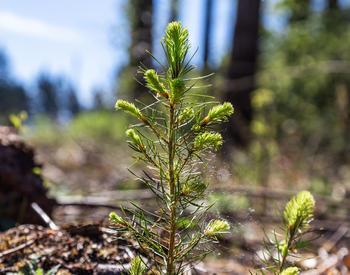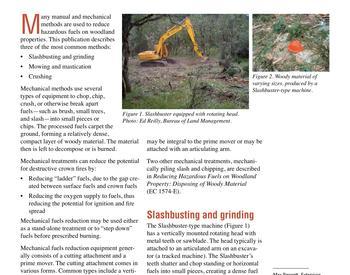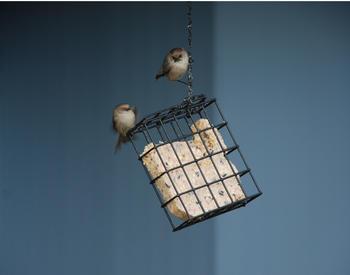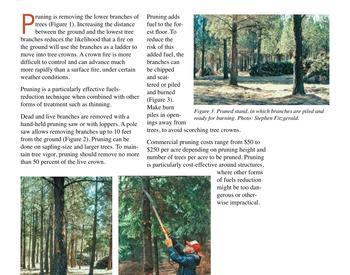The information in this article is excerpted from the publication Woodland Ponds: A Field Guide by Steve Bowers.
Few amenities better enhance the value of a woodland property than a pond. When built correctly, ponds can provide water for livestock and wildlife, fishing, boating, swimming, fire protection, aesthetics, and higher land value. Before digging, identify what value you hope to derive from the pond and incorporate those features into a carefully planned project. Pre-project planning will reduce long-term maintenance and repairs, and lead to a better final result.
Permits
Many woodland activities, including building and maintaining a pond, require a Notification of Operations with the Oregon Department of Forestry. Additionally, new or modified ponds that will impact existing wetlands, waterways, or fish passage require additional levels of restrictions, regulations, and permits. Contact your local watermaster to help you determine if your property will have any impact on fish
passage or sensitive ecological areas. With very few exceptions, a permit from the Oregon Water Resources Department (OWRD) to use or store water in a reservoir will also be required. For information on waterway or wetland activities that often require additional professional assistance and permits, consult the Oregon Watershed Enhancement Board (OWEB) publication, A Guide to Oregon Permits Issued by State & Federal Agencies—with a focus on permits for Watershed Restoration Activities.
What type of pond will you build?
An excavated pond is dug into ground that is reasonably flat. This type of pond is best suited to locations where the demand for water is small. Because excavated ponds can be built to expose a minimum water surface area in proportion to their volume, they are advantageous where evaporation losses are high and the water source is primarily runoff during the wet season. The simple design, compactness, low risk of damage from flood flow, and low maintenance requirements make them popular in many areas of the state.
An embankment pond is a pool of water that collects behind a dam. The surrounding areas may have slight to steep slopes. Embankment ponds are more complex than excavated ponds, and may require an engineer to design. It’s important to make sure water does not back onto an adjacent owner’s property or into an area of specific concern, and that there are no homes, buildings, or roads that would be affected by a dam failure.
In a combination pond, excavated material is used to build the dam, saving time and money. An engineer may need to design the project and oversee construction. Attention needs to be given to excavating the upland area where the water will be stored to avoid excessive erosion, pond sedimentation, and damage to the natural surroundings. Owners will want to minimize dam height and thus avoid additional engineering and permitting costs.
Location
It pays to carefully examine a site before deciding whether a pond there is practical or economically viable. Upland sites are often superior because the groundwater table generally follows the land’s contours and may be fairly close to the surface at higher elevations. Low areas may be muck-filled and more difficult to excavate, and in some instances may require additional permits. Marshes, lowland woodlands, brushy wetlands, bogs, and other wetland areas provide important wildlife habitat, and converting them to ponds may not be the optimal use, or even allowed.
Scout pond locations during the dry months, look for small areas that indicate the presence of a high water table such as vegetation that grows on wet sites. Note that favorable wet sites may have unstable soils, however, especially on steeper slopes. Look for trees bending themselves to an upright position (sweep). This is a sign of soil movement, which is not desirable around a pond.
To get the most pond for the money, locate it where the largest storage area can be obtained with the least amount of excavation, which is the most expensive aspect of the project. A favorable location might be a narrow section of a valley or swale, where less material is needed to construct the dam. The slope of the ground uphill from the dam should allow water to flood the area.
Avoid areas near a dwelling, feedlot, corral, drain field, or any location that may generate contaminated runoff that could reach the pond. You should also avoid locations where failure of the dam could injure people or livestock, or damage buildings, roads, or ecologically sensitive areas.
Water Source
The water source for your pond can be the natural water table, seeps or springs, surface runoff, or a combination of any of these. Note that Pumping water to supplement a pond can be expensive and affect the flow of any adjacent wells.
Soils
To fully assess the soil type, landowners can excavate a small area prior to beginning a full-scale operation. Three or four diggings per acre are adequate to assess the soil profile over the site, although more may be required if there are substantial variations in soil conditions. Suitability of the pond location depends on the ability of the soils and shallow bedrock near the bottom of the pond to hold water. The bottom should contain a layer that is impervious and thick enough to prevent excessive seepage. Clay and silty clays are excellent soil types for this purpose, while coarse-textured soils, such as sand, gravel, or sand-and-gravel mixes, are highly permeable and often unsuitable. Permeable soil types may be acceptable if they have a spring or seep.
Shape
Ponds can take on any geometric shape including rectangle, circle, or ellipse. However, you can create a natural shape by fitting the contours of the natural landscape. Locate the pond to retain existing trees and shrubs along or near the shoreline. Vegetation adds aesthetic value by casting reflections on the water, providing shade in the summer, and blending the man-made structure into the natural landscape. Rectangular shapes are often the easiest and cheapest to build, but a pond with rounded corners, indefinite shapes, and even islands, has more eye appeal and increased wildlife habitat.
Identify major viewpoints from which the pond will be seen. Locate the pond to ensure that the major sight line crosses the longest portion of the pond. Shift the location of the dam to keep the dam, pipe inlet, or spillway out out of view and make the pond surface the center of attention.
Size
People typically correlate size with surface water area, not water capacity. But a pond that is the size of a football field and a foot deep holds the same amount of water as a pond that is a quarter the size of a football field but 10 feet deep. Having a larger surface area but a shallow depth is not a good idea for woodland landowners who want to use the water for swimming or fishing, but it might work if you want to have a giant mud puddle or you’re interested in raising frogs!
To ensure a permanent water supply, a pond must be deep enough to meet its intended use and allow for seepage and evaporation. If warm-water fish production is the major objective of a pond, the pond needs to be at least 10 to 12 feet deep. If creating native wildlife habitat is the goal, a pond needs to be 4 to 6 feet deep. If multiple objectives are sought, deeper water levels take precedence. The depth of a pond varies between winter and summer, but a deep pond with a smaller surface area will lose less water to seepage and evaporation than a shallow pond with a larger surface area.
Maintenance
After the pond is completed, woodland owners should plan and budget for periodic mowing, waterline debris removal, restocking fish, vegetation control, repairing docks, and maintaining the access road. Regularly check for signs of leaks or seepage. Do not expect pond levels to remain constant; evaporation happens, even with substantial water flow from seeps and springs.





